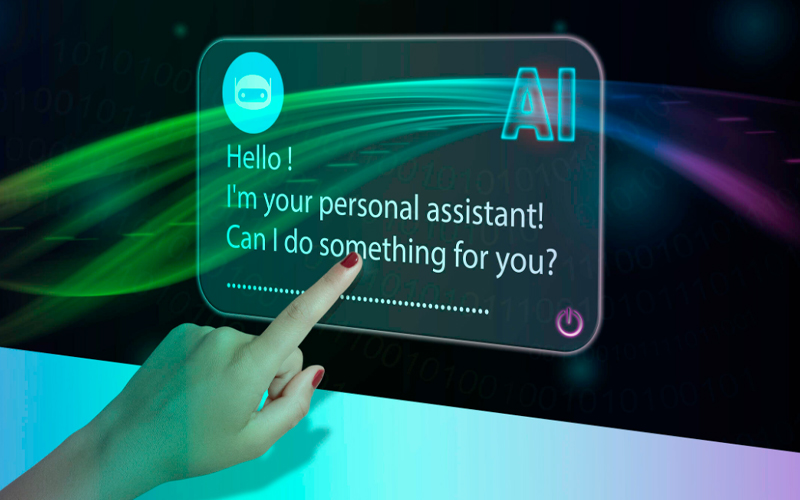Imagine a virtual agent that can detect and contain cyber threats in real time, a human-like assistant capable of offering personalized care to patients via tailored treatment plans, or a banking bot smart enough to recommend financial products to clients. All this and more is possible through Agentic AI — the next big wave in the vast ocean of Artificial Intelligence. That too, without constant human guidance.
Although traditional AI applications and agents, which rely on human inputs, have been around for a while — think chatbots or voice assistants like Siri — Agentic AI systems take it a step further. They employ more autonomous agents equipped to analyze situations, take independent decisions and learn on their own to improve outcomes. With their sophisticated reasoning ability and adaptive execution, they can prove to be a gamechanger across sectors, enhancing human-machine collaboration. However, organizations tapping the technology must ensure its integration augments human agency rather than reducing it.
The Different Faces of Agentic AI
- Simple reflex agents,
which use only current data and follow pre-defined rules, are the most primitive AI agents. A home thermostat is a basic example.
- Model-based reflex agents
like self-driving cars are more sophisticated. They utilize percept history to create a model of the environment they operate in and navigate accordingly.
- Goal-based agents
are one notch smarter. They think for themselves to meet predefined goals. Personal fitness apps are an apt example.
- Utility-based agents
evaluate multiple potential actions and select the one that maximizes their overall utility. Streaming services like Netflix use such agents to recommend content.
- Learning agents probably the most advanced, can improve their performance by learning from data and experiences. A case in point is Google's AI-powered breast cancer detection system which learns from medical data to enhance diagnostic accuracy.
These intelligent agents in AI can be part of single-agent or multi-agent systems. While standalone agents focus on specific domains, multiple agents collaborate to achieve a common objective. Agentic AI largely employs multi-agent systems which utilize the myriad capabilities of individual agents to tackle complex processes. Think of it as an orchestra conductor who directs individual musicians to create the perfect symphony.
Agentic AI in Action: Industry Use Cases
Though still nascent, Agentic AI is poised to revolutionize sectors like banking, healthcare, finance, retail, manufacturing, etc., and tech pioneers like Google DeepMind, Microsoft Azure AI, Nvidia and OpenAI are shaping this shift with their diverse suites of AI solutions. As per McKinsey, Agentic AI and related technologies have the potential to add between $200 billion and $340 billion annually to the banking sector. Banks, the world over, are realizing this. While HSBC has deployed AI agents for banking processes and enhancing financial fraud detection, Citibank’s AI tools – Citi Assist and Citi Stylus – analyze client portfolios and offer customized recommendations. Organizations are also using AI agents in finance for fraud detection to reduce scam-related losses.
Use cases are emerging in other sectors too. A California-based Agentic AI healthcare company has developed empathetic AI agents which remind patients to take medications. Even Indian companies are keen on joining the Agentic AI bandwagon. Deloitte’s fourth wave of the State of GenAI report (India perspective) says that more than 80 per cent of Indian businesses are exploring the development of autonomous agents.
Navigating the Challenges of Implementing Agentic AI
Like every other evolving technology, the implementation of Agentic AI also comes with challenges that companies must navigate. While increased autonomy may reduce the burden on human employees and optimize workflows, organizations should remember AI agents are not infallible. They must set up frameworks that fix accountability in case an autonomous system goofs up. Secondly, companies should ensure that the development and deployment of AI systems align with human values. Data privacy is another concern, and robust security protocols must be put in place to prevent breaches.
The Middle Road: Finding the Balance between Man and Machine
While AI agents are capable of providing faster solutions and handling bigger workloads, there’s no denying that human agents bring more empathy and understanding to any interaction. Hence, it’s crucial to strike the right balance between man and machine.
Organizations can achieve this by adopting a hybrid approach. They can deploy virtual agents to automate routine tasks and provide recommendations, but the responsibility of making more sensitive decisions and intervening in tricky situations must be vested with humans. For example, IBM’s Watson Recruitment processes millions of applications annually, but human recruiters lead final interviews and salary negotiations. Businesses should also equip workers with the right skills needed to succeed in an AI-augmented economy.
Superintelligence may be only decades away, but it doesn’t necessarily have to be a threat to humans. Autonomy and control can go hand in hand. By building systems which combine the speed, efficiency, and scalability of AI agents with the emotional intelligence, real-world experience and adaptability of humans, companies can offer customers the best of both worlds.
How can Infosys BPM help?
At Infosys BPM, we recognize Generative AI as a catalyst for business transformation. Our Generative AI Business Operations platform provides enterprises with the tools and frameworks they need to realize their full potential. We are committed to empowering businesses to accelerate value creation and drive sustainable growth in the digital age.







